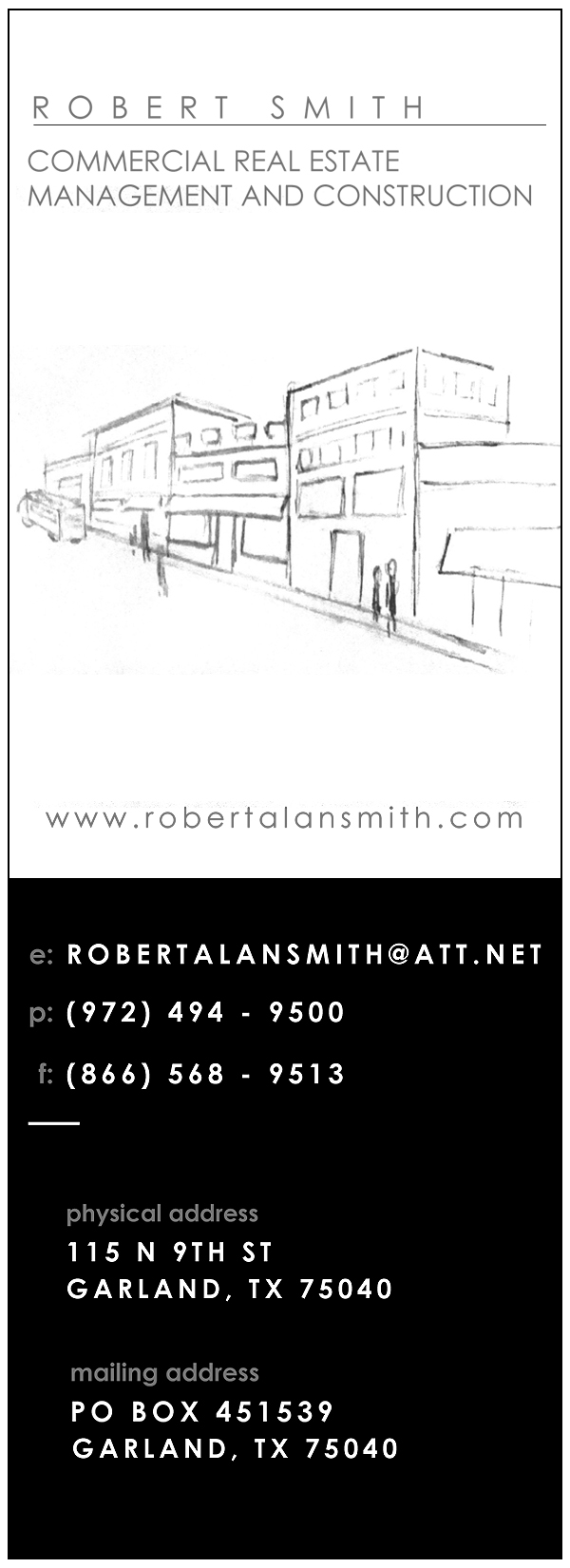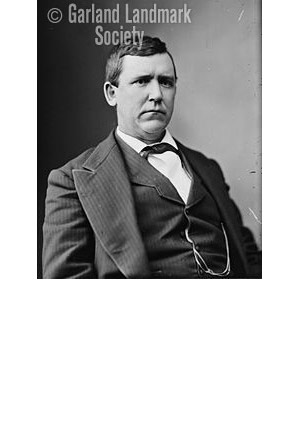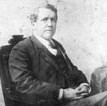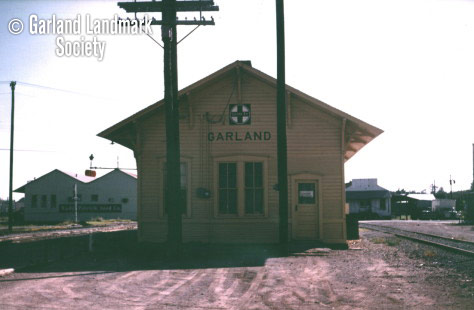Donate
Please consider supporting our efforts to preserve Garland's history by donating here:
See More

 Today's Garland combines many smaller rural communities and townships, the earliest of which was Duck Creek. Rooted from pioneer arrivals in the 1840's and 50's, Duck Creek's business district originally rested on the west side of the creek of the same name near the present Avenue B crossing. When rail lines appeared ca. 1886, they ran north and east of Duck Creek. The GC&SF railway even developed the competing town of Embree, whose commercial establishments pivoted around their depot, then located near the present Avenue C. crossing of that line.
Today's Garland combines many smaller rural communities and townships, the earliest of which was Duck Creek. Rooted from pioneer arrivals in the 1840's and 50's, Duck Creek's business district originally rested on the west side of the creek of the same name near the present Avenue B crossing. When rail lines appeared ca. 1886, they ran north and east of Duck Creek. The GC&SF railway even developed the competing town of Embree, whose commercial establishments pivoted around their depot, then located near the present Avenue C. crossing of that line.
After Old Duck Creek, which had lost its post office to Embree, suffered a destructive fire in 1887, some of it's business and professional people relocated to Embree. But others laid out the town of New Duck Creek, roughly located north of the present square. Following a year of fierce competition and some enmity, the post office was relocated to a mid point, and the two townships combined under the banner of Garland. The city incorporated in 1891 with a population approximating 500.
The new entity was named after Augustus H. Garland, Attorney General in the administration of President Grover Cleveland. Garland was a former Arkansas governor and senator who had gained renown through his efforts to regain the right to practice law as a pardoned Confederate. He had become the first southerner to hold cabinet rank since the Civil War. No evidence indicates that Mr. Garland ever presented himself here; in fact, he may not have visited other places named for him outside Arkansas, but he did provide a name that both Duck Creek and Embree could embrace.
 With the fight behind them Garlandites consolidated their efforts toward building a solid agricultural community. Local farmers primarily raised cotton, various grains, onions and livestock, and Garland's business center served rural customers from miles around. The city dwellers included a home-owned power pant when they installed water and sewer lines in 1923. Agricultural dominance, however, began to erode in the late 1930's, when industries first became attracted by Garland's resources. War production gave the city its biggest economic and population boost, and by 1950 the census numbered 10,291 souls.
With the fight behind them Garlandites consolidated their efforts toward building a solid agricultural community. Local farmers primarily raised cotton, various grains, onions and livestock, and Garland's business center served rural customers from miles around. The city dwellers included a home-owned power pant when they installed water and sewer lines in 1923. Agricultural dominance, however, began to erode in the late 1930's, when industries first became attracted by Garland's resources. War production gave the city its biggest economic and population boost, and by 1950 the census numbered 10,291 souls.
Garland spent the next 50 years developing its available land area around its diversified industrial base. As agricultural activity declined, a multitude of new businesses and industries arose. Rural communities, such as Centerville, Pleasant Valley and Rose Hill, were absorbed in the process. But even as it grew, the city retained the character of a family town full of cultural, religious, social and children's sports activities.

Fire erased that first depot in January of 1900, after Embree and Duck Creek had combined to form Garland and begun to established a business district near the present site of the square. Arson was suspected, but no one was arrested for the crime, and the railroad dallied in replacing the facility. News editor Will Holford repeatedly lambasted the line for its delay, which caused loading of freight and passengers from a makeshift dock somewhere south of the charred ruins. Finally, 20 months later, in July of 1901, this replacement building was opened on the west side of the tracks between present Main Street and Avenue A.
While the first depot was only 18’x70’, this <1901 Santa Fe Depot> measures 24’ x 90. Abrasive tests conducted about 1970 suggest that the building's exterior was originally painted red, and that it sported a green roof. News accounts stressed that it had oiled floors and ceilings in the waiting rooms, implying perhaps that the old one did not. No specific original plans survive for either building, which were reportedly designed and built by railroad employees making many decisions on site. But a study of contemporary depots on the Santa Fe line reveals several standard formats.
In October 1901, a train wreck almost demolished this building for which Garlandites had waited so long, if not so patiently. A double-header cattle train (pulled by two steam locomotives elephant-style) was barreling through town at full speed from the south when it struck a yearling on the tracks about where Avenue B crosses today, pushing the animal up the rails just past Avenue A, where the train derailed. The lead engine lurched to the left toward the depot, but smashed into pine timbers around a gravel platform near the waiting room. The trailing engine peeled off the track to the right. Both 60-ton locomotives and their coal tenders were demolished. The firemen and the engineer of the rear unit jumped off in time to save themselves, but the lead engineer was reportedly crushed under his locomotive, which spewed boiling water, fire and steam as it toppled over.
